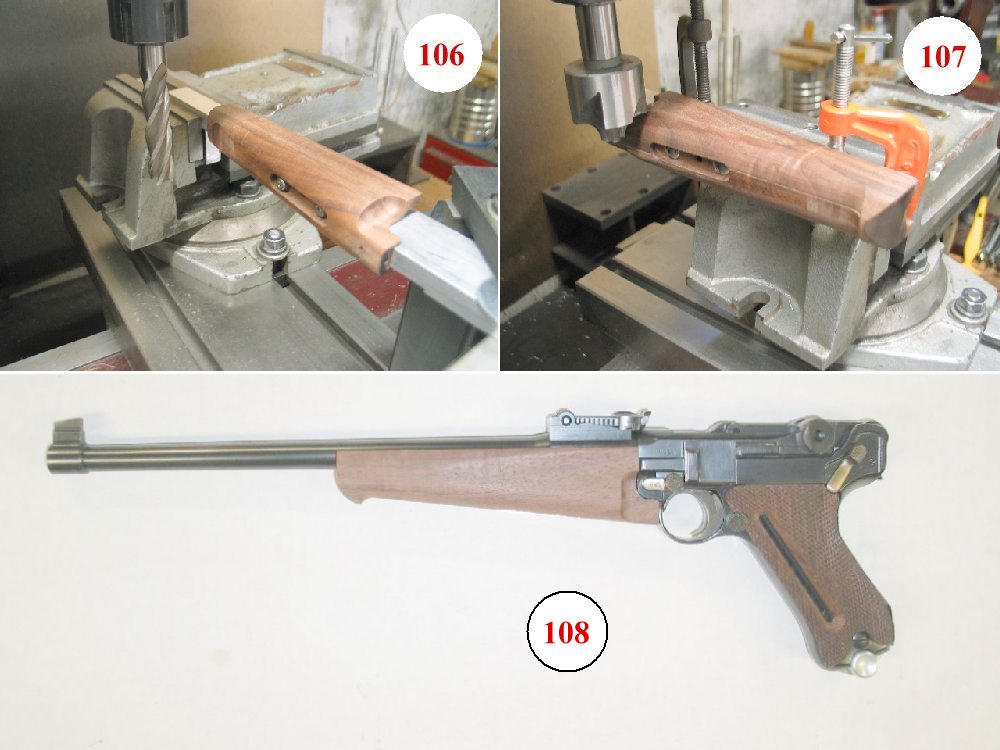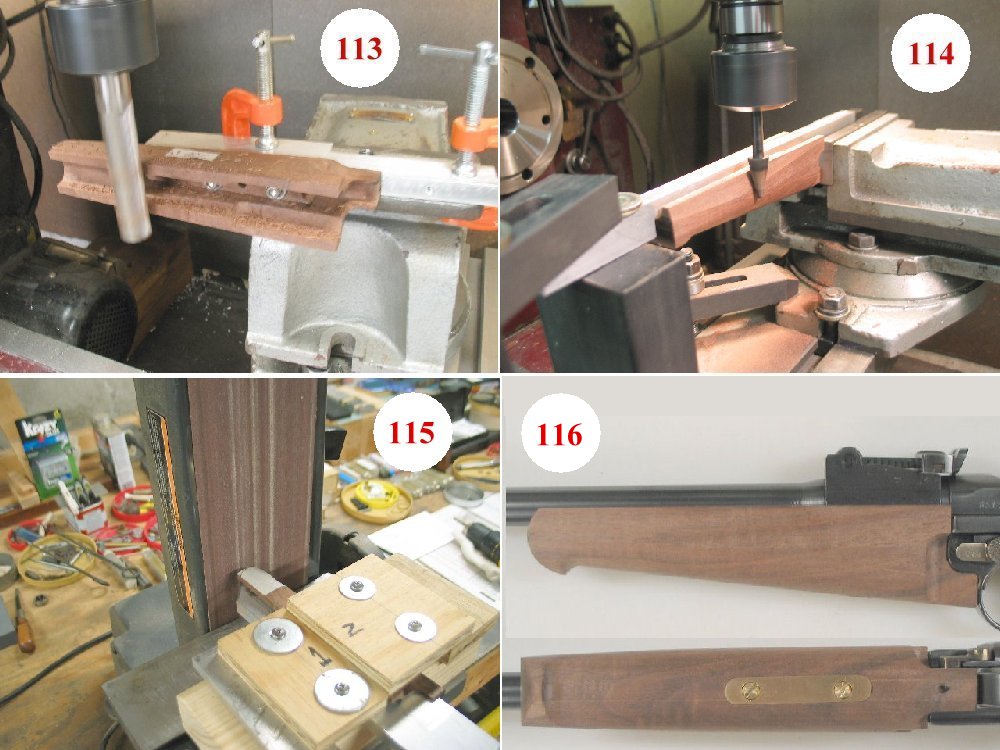After doing some experimenting with my corner rounding end mill on that soft pine, I felt confident enough to do some more corner rounding on my forearm...
(106) Extending the flat on the bottom further forward.
(107) Extending the rounded corners of the bottom forward to the Schnabel tip I created in 106.
(108) Lightly sanded and rubbed, then attached to the frame lug for inspection. My brass inlay needs to be milled down 10 or 20 thousandths, and I made a couple mistakes doing these additional tapers. A chip here, a cutter line there. It's not perfect, but I'm not either, so this will do for now. Still needs more work of course, blending the taper curves together, maybe rounding the top line.
A member suggested that I have the forearm checkered. That would hide/detract from my mistakes, but is this 'Gonzo' Luger long-barrel really deserving of checkering??? I'll have to mull that over for a while and maybe consult a higher power...

The checkering on the grips is awful coarse, and the grips themselves are quite thick...And my 'cartridge counter' mod to them isn't all that great...
Also, the brass inlay would interfere with a traditional checkering pattern...And the side checkering would need to be different...
My brain hurts...


I just noticed that Herbert Werle's carbine does not use the forearm 'wedge' to hold his forearm on (pic in post #1 above). It seems to be held on by the sling stud. That's cool; I managed to copy his idea without knowing it...

Continuing on with a couple of small refinements...
(109) Thinning the brass inlay. I put a .004" shim between the inlay and the wood so I wouldn't cut into the forearm.
(110) Milling down the brass screws, so they won't hit the barrel.
(111) I still need to finish the tip of the forearm. I don't have good pictures of how it should be shaped, so I'm going by guesswork. The tip seems to be rounded from the side and from the top. I made up a quick and dirty fixture to hold the forearm level (along the barrel axis) so it could be sanded to a round contour in the side view. I'm using my pine 'practice' forearm to see how it would look. It worked excellently. In hindsight, I should have sanded the front tip round after milling the sides and bottom flat but before using my corner rounding end mill on the bottom curved surface. That would have allowed me to draw my round contour directly on the flat of the wood and then I could have easily sanded it and then gone on to the corner rounding of the bottom. As it is, my surface is curved and I'm not skilled enough to sand it freehand without a guide of some sort.

If I totally ruin this Walnut forearm, I'll make a new one the right way. But I'm too far advanced to trash this one and start over without a compelling reason.

(112) I've been looking at pics of Luger forearms on the net and mine looks 'thick' by comparison. Looking closely, I notice that the forearm upper deck height is right at the centerline of the barrel, while mine is approximately 3/32" above that centerline. Mulling over how best to cut that much/little off the upper deck, I decided to try side milling it, both sides at once, and climb milling to minimize chips. Here is one of my practice pieces being climb/side milled to see how well this works. Note: It works great!


Next up is to 'thin' my good Walnut forearm. Same technique as in the previous pic. Climb/side mill the upper deck - comparison of pictures from a recent auction show I need to mill .125" off my deck to get the correct height.
(113) Side/climb milling my good forearm, upper deck.
(114) Re-cutting the deck taper of the forearm.
(115) Tip profile curve marked on tape; sanding curve with forearm clamped in Gonzo sanding fixture.

(116) How the profile now looks, with top deck lowered and front tip profile sanded curved. I still need to sand the bottom/top of the tip to a curve also. Pictures show this curve to be rounded in both axes; I'm not sure how to do that. I'll have to think it over...Maybe with a corner rounding end mill or router bit in my rotary indexing head???

